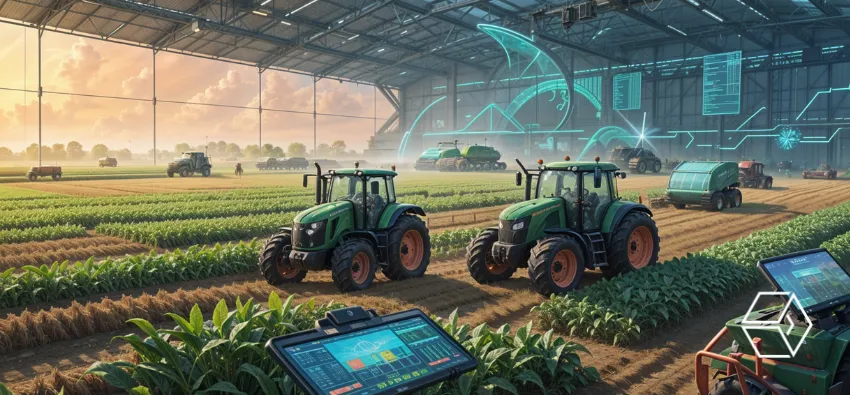
A recent study by PwC indicates that 58% of India’s population relies on agriculture as a pillar of their economy. The food processing business generates around 3.32 trillion dollars in agriculture gross value added worldwide, ranking second only to the Chinese market. The food sector is critical to the Indian economy, accounting for 24% of total output and employing 25% of the workforce. According to an estimate, the market would grow at an 11% CAGR, reaching a staggering $538 billion by 2025.
Technological innovations, such as the use of automated tools, could bring changes to the tech sector, given the prospect of a comprehensive look into the future industry. Today, the entire industry is experiencing transformation and faces a variety of challenges across the value chain. These problems highlight the importance of introducing disruptive technological advancements capable of generating significant solutions and advances in this field.
Underpinning these new possibilities is the convergence of AI and blockchain technology, which is increasingly acknowledged as crucial disruptors and revolutionizers of agriculture. This merger not only simplifies operations, but it also has the potential to significantly improve our food supply’s security system. AI and blockchain integration might lead to a significant improvement in the monitoring and regulation of the entire agricultural industry from farm to table, with fairness and traceability taking priority. This technique will provide a more thorough picture of how this process operates and impacts society.
The use of artificial intelligence in agriculture is currently experiencing substantial global adoption. According to current data, the market was worth $852.2 million in 2019 and is expected to reach $8,379.5 million by 2030. This remarkable growth is primarily due to the increased use of IoT and data analytics in agriculture, which has resulted in high agricultural productivity through data collection and deep learning. AI-driven agriculture monitoring systems and precision farming are particularly popular, with investment estimated to quadruple by 2025 to US$ 15.3 billion.
Similarly, the use of AI and machine learning in robotics in remote farming remains critical. This advancement has significantly boosted efficiency and reduced waste by concentrating on activities such as fertiliser application and harvesting processes. Furthermore, AI is increasingly being used to regulate soil health and agricultural growth using remote sensing and predictive analytics. Using these technologies, farmers may make strategic decisions throughout the entire process, from seed planting to harvest.
Blockchain technology is significant because it contributes to the security and efficiency of agricultural transactions. It maintains a high level of protection against hacking and system failures due to its decentralized design, which is critical for ensuring the safety of complex farm data. Blockchain-based smart contracts make transactions in the agricultural supply chain easier by automating compliance checks and contract execution, eliminating delays and paperwork while also ensuring speedy and safe transactions.
Aside from these accomplishments, the sector faces other challenges, including inefficiencies, fraud, and contaminated items in the supply chain. Overall, these issues are becoming more complicated as the population grows. This critical component will decide the tech sector’s long-term success.
Walmart and IBM Food Trust are two successful case studies that implemented blockchain technology for monitoring and tracing. They implemented AI-powered analytics to reconcile the demonstrated cost savings and environmental benefits with the environmental and cost implications, thereby increasing crop yields and decreasing waste.
Over the coming years, the integration and advancement of these technologies will substantially augment their utility in the agricultural sector. The expansion of government policies and agritech firms’ increased R&D expenditures contribute to the creation of novel technologies that have the potential to revolutionize agricultural methods, foster sustainable food production, and generate more employment prospects. Consequently, the sector’s future remains auspicious.









